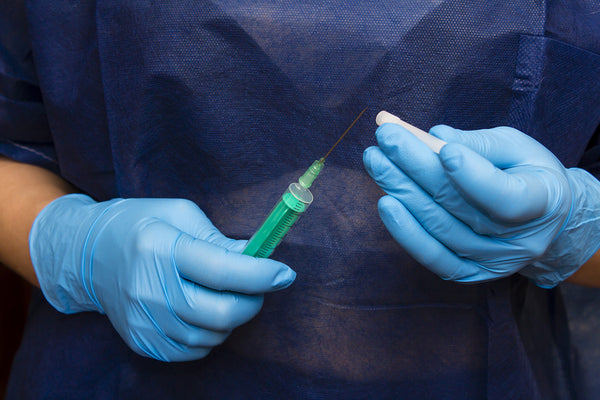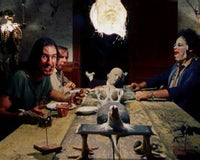He was serving four life sentences after his 1987 conviction for the murders of 25 people, most of them at Drake Hospital in Cincinnati. The “Angel of Death” serial killer tag stuck because he was often at his victims’ bedside. His true toll remains murky. His admission, and a plea deal to those killings, spared him the electric chair. Eventually, he was convicted of 36 murders in Ohio and Kentucky between 1970 and 1987.
He claimed, however, to have killed 87 people — a total that included not just patients or the terminally ill who were under his care in hospital settings, but roommates, neighbors, and lovers, according to a detailed summary of his background and alleged murders compiled by researchers at the Radford University Department of Psychology.

The Angel of Death
Donald Harvey’s reported first kill, at age 18 on May 30, 1970, involved 88-year-old patient Logan Evans at London, Kentucky’s Marymount Hospital, who was smothered by Harvey with a pillow and a sheet of blue plastic.
“He listened to his heart rate with a stethoscope until he was dead,” according to the summary of Harvey’s actions. “He disposed of the plastic and cleaned him up, dressing him in a clean hospital gown.”
After Evans had died, Harvey “had no fear of getting caught and notified the nurse on duty,” states the report.
Harvey’s last murder — and the one that triggered an investigation and Harvey’s arrest — occurred on March 7, 1987, when he gave a patient at Drake Hospital, 44-year-old John Powell, cyanide in his gastric feeding tube. That same day, he also killed Hilda Leitz, 82, by feeding her Detachol through her gastric tube and in her orange juice.
A forensic pathologist conducting the autopsy on Powell detected the smell of bitter almonds, which matched with cyanide, and “knew that foul play was afoot,” according to the research report. The pathologist sent samples to three other labs to confirm the cyanide presence, and Cincinnati police were alerted.
Investigators first considered Powell’s food sources, then questioned his wife. But fingers soon pointed in Harvey’s direction.
“Nurses at the hospital were interviewed and during one of those interviews, Donald Harvey’s name was brought up because of his questionable ending of employment at the V.A. Hospital,” reports the research summary.
It continues: “Hospital employees at this time were volunteering to take polygraph tests, and Donald volunteered to take one after buying a book on how to beat lie detector tests.”
After calling in sick on the day of his scheduled test, Harvey was brought in by police for questioning and “confessed to having put cyanide in John Powell’s G-tube,” the report says. “He explained that it was because he felt sorry for him and for his family. He denied ever having done that for anyone else.”

The Authorities Catch Up.
Harvey was indicted for Powell’s aggravated first-degree murder on April 6, 1987. His pattern of killings was unveiled after WCPO anchor Pat Minarcin asked another reporter on-air whether Harvey’s alleged actions might be to blame for other deaths, attracting anonymous calls from nurses raising additional accusations about the orderly.
Minarcin shared those accusations with Harvey’s public defender, William Whalen, who worked out a plea bargain that required Harvey to confess to all his past murders in order to take the death penalty off the table.
On July 9, 1987, Harvey confessed to 10 murders and two attempted murders. He admitted to carrying out his killings primarily using cyanide for its hard-to-diagnose properties, but also arsenic, rat poison, and petroleum distillate.
By 1998, he had been convicted of 28 counts of murder and seven counts of attempted murder. The total would eventually reach 36 murder convictions — comprising 35 men and 11 women, ranging in age from 42 to 91 — plus one conviction for intentional manslaughter.
His methods included smothering with a pillow; poisoning with arsenic, cleaning fluid, rat poison, Demerol, morphine and codeine; deprivation of oxygen using a faulty oxygen tank; and attempted injections of HIV and hepatitis B. Not all of the 87 victims Harvey claimed could be identified, but his claims of responsibility didn’t waiver.
Harvey’s attorney “did not consider an insanity plea,” according to the report of his actions. “Donald didn’t want it.” Murders took place in Harvey’s home or in the home of the victim, “but for the most part in the hospital in which he worked,” states the report of his crimes.
In an interview on a 60 Minutes II broadcast in 2003, Harvey “indicated that the reason he got away with it for 17 years was that the doctors are overworked and sometimes don’t even see the patients after they die,” the report says. Harvey was beaten by another inmate at the state prison in Toledo, Ohio and died in 2017. He would have been eligible for parole in 2043 at age 91.
****
Harvey has become part of a legacy in criminology where criminals who commit similar acts to the ones he committed are considered an “angel of death.” The study for the motivations of killers like Harvey has been examined, and generally falls into one or more types or patterns. There is the mercy killer, who believe the victims are suffering or beyond help, though this belief may be delusional. There is the sadistic killer, who use their position as a way of exerting power and control over helpless victims. There is also the malignant hero, a pattern wherein the subject endangers the victim's life in some way and then proceeds to "save" them. Some feign attempting resuscitation, all the while knowing their victim is already dead and beyond help, but hope to be seen as selflessly making an effort.

More True Crime:
Richard Ramirez: The Night Stalker
The Real Texas Chainsaw Killer: Ed Gein
The Five Worst Serial Killers In Houston, Texas
Support Us:












